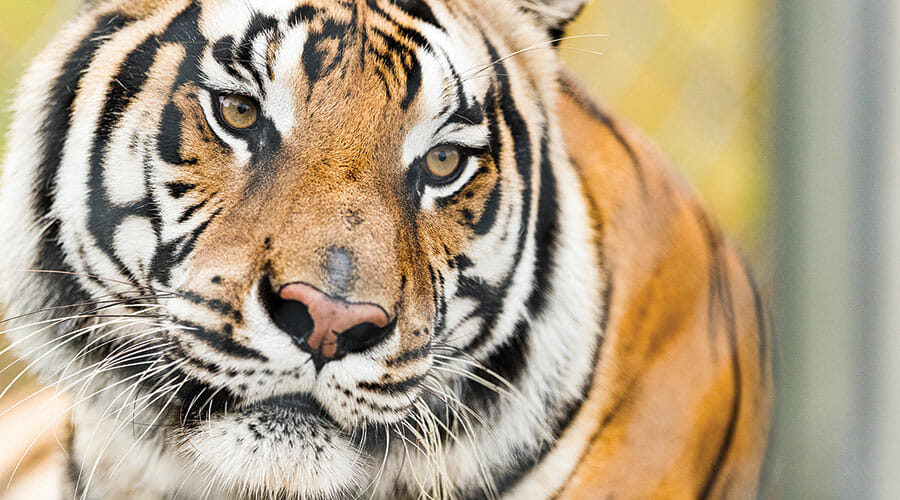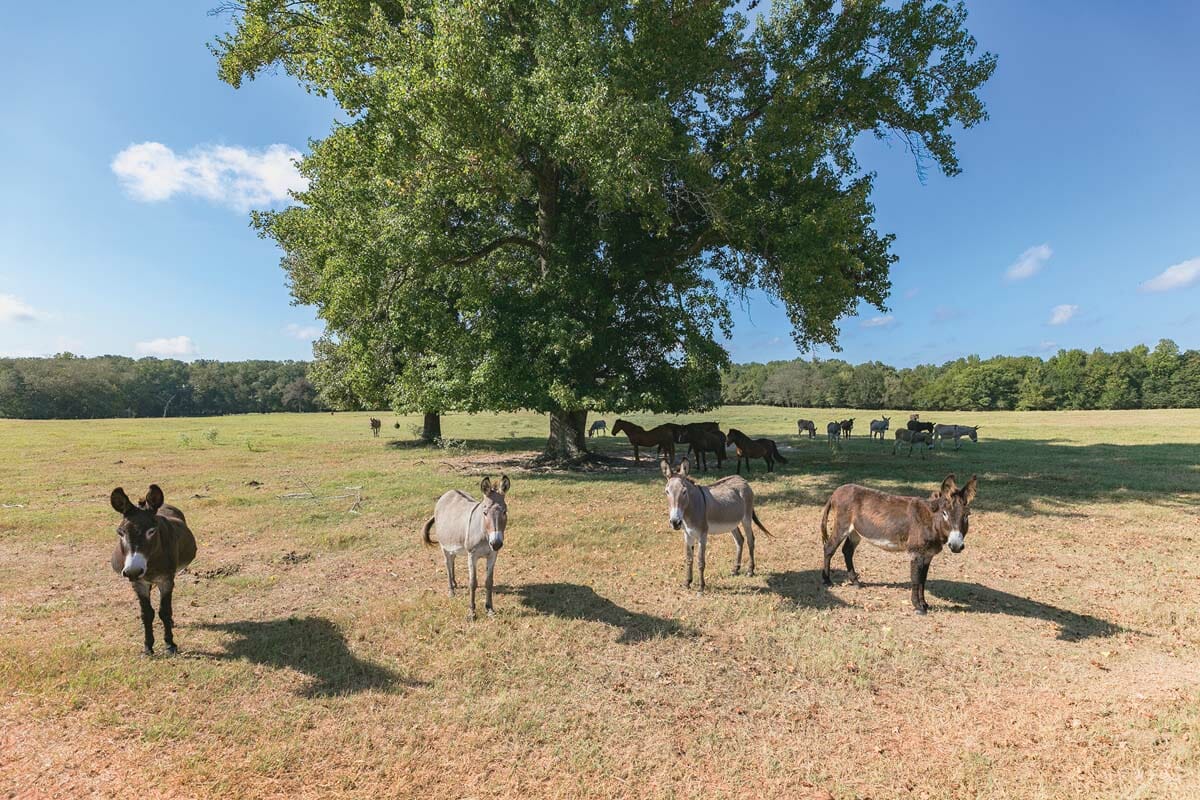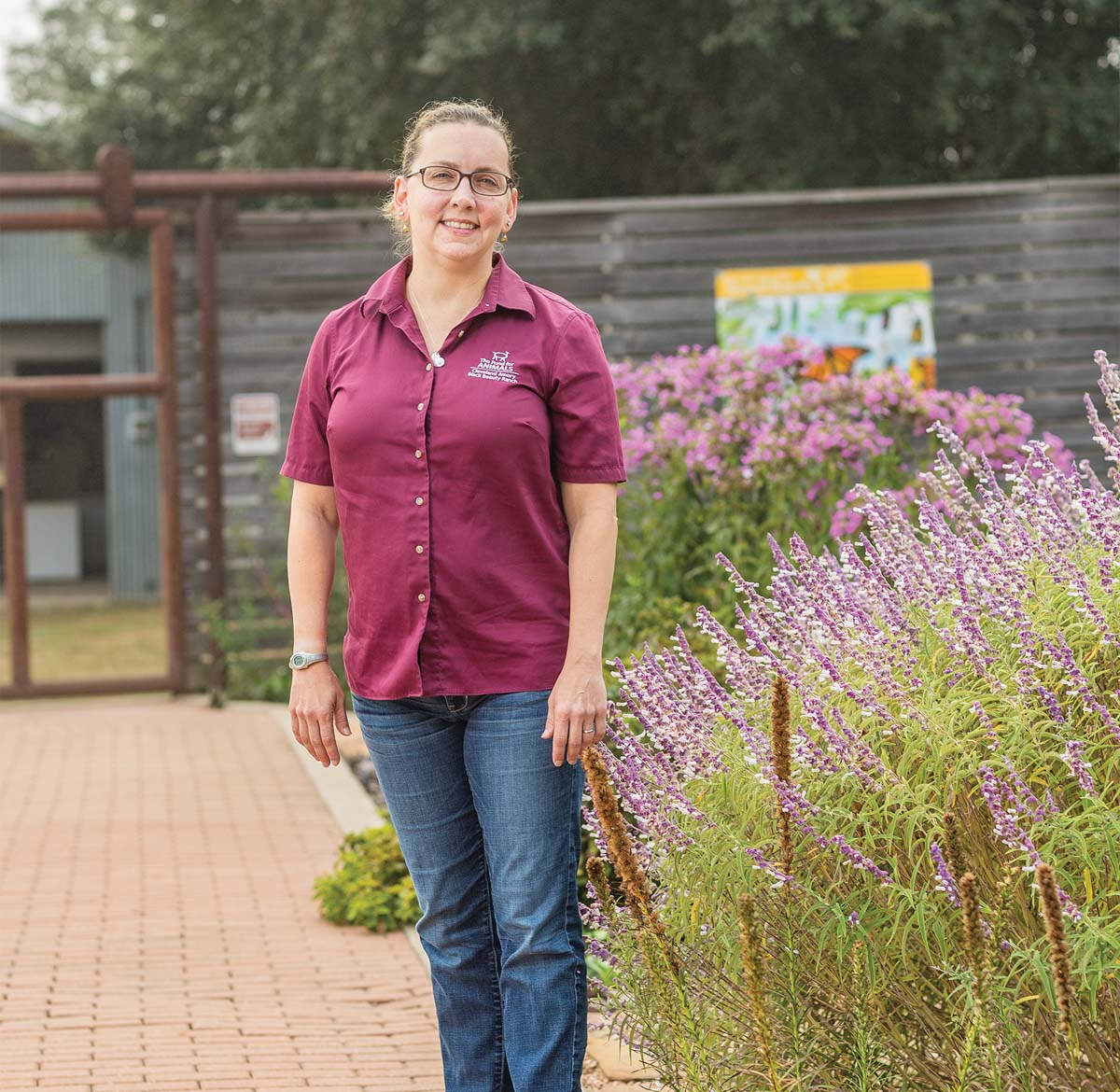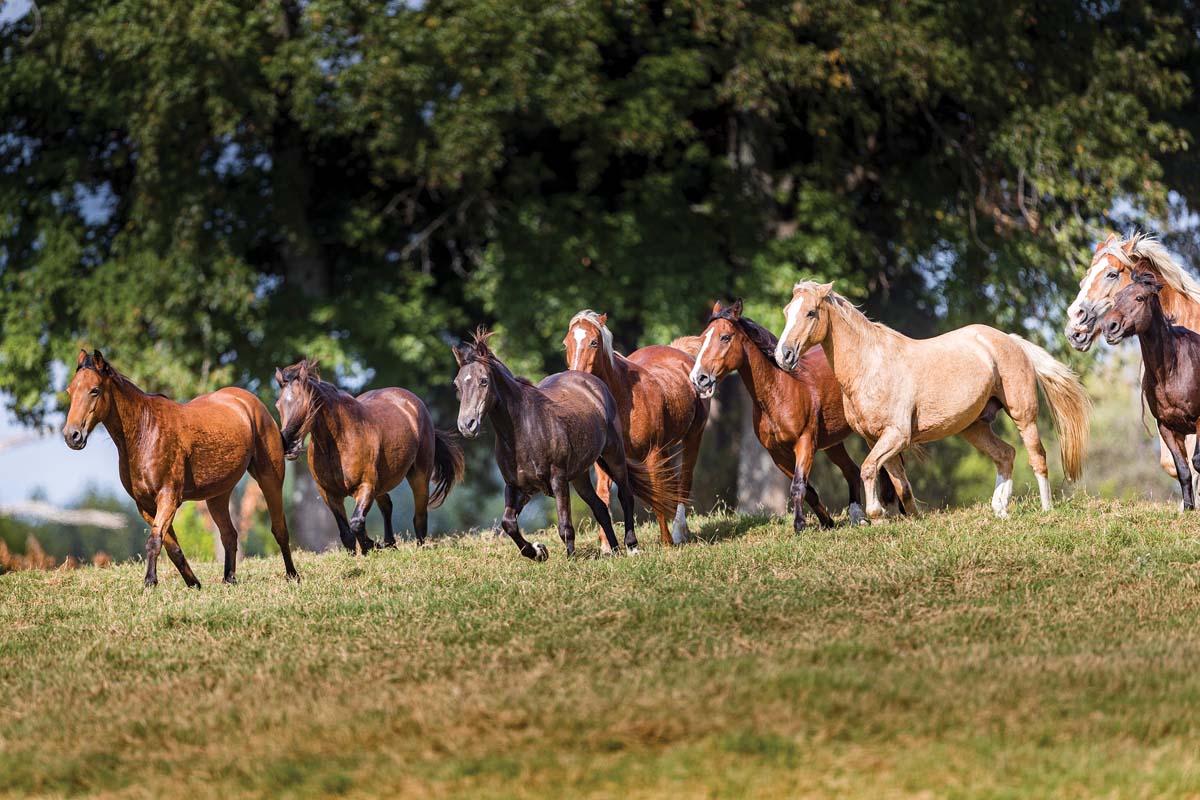
By Laura Samuel Meyn
Photos by Jeremy Enlow
The Cleveland Amory Black Beauty Ranch celebrates 40 years of saving lives and salving spirits.
The ranch has a special history with burros. Nearly 40 years ago, founder Cleveland Amory led the charge to save 580 burros from the bottom of Grand Canyon National Park, an ambitious task using helicopters and slings. Today, the sanctuary is home to some 500 burros and horses combined. The acreage they roam is some of the most picturesque on the property.
One of the resident burros is interested in the human visitors but not enough to leave its shaded area.
Black Beauty Ranch director Noelle Almrud drives slowly on a white gravel road that snakes its way through 1,400-plus acres of this East Texas animal sanctuary. Fluffy clouds hang low in the blue sky, over gently rolling pastureland interrupted with stands of mature trees, lakes and ponds. Almrud, a 40-something Texas A&M wildlife and fisheries graduate, points toward the horizon where half a dozen horses are running freely in the distance. Closer to us, a group of burros prefers to relax in the shade of a large oak tree. “We provide shelters, but they stand under the trees,” she says with a laugh. “We give them choices.” As we idle in a ranch truck, which the animals recognize as the bearer of meals, Piper, a Belgian draft horse, approaches. “I’m very sorry, I don’t have any food,” Almrud says, showing her an open, empty palm; the horse reaches out with her velvety pink muzzle and, finding nothing, snorts. Almrud apologizes again before the mare tosses her flaxen mane and trots off.
The Cleveland Amory Black Beauty Ranch in Murchison, operated by The Fund for Animals — an affiliate of The Humane Society of the United States — is one of the largest and most diverse animal sanctuaries in the nation, home to 800 animals from 40 species. It was founded in 1979 by author and animal activist Cleveland Amory. Inspired by Anna Sewell’s classic novel Black Beauty, he had dreamed since childhood of opening a ranch where animals could be free. Amory launched The Fund for Animals in 1967 and fully realized his vision a dozen years later with the opening of Black Beauty Ranch. After his death in 1998, Amory’s ashes were scattered on the property; in 2005, the board voted to add his name to the sanctuary’s official moniker.
Cleveland Amory Black Beauty Ranch is definitely not a zoo. In Amory’s words, “It would not be a place where animals were primarily to be looked at — rather it would be a place where they were primarily to be looked after.” Breeding is prevented by neutering male arrivals (primates get vasectomies, as they can detect neutering among the males), although females have arrived at the ranch already pregnant. The chaos of the animals’ former lives is replaced with a serenity that is achieved by providing for their needs and largely keeping humans away. But it’s still possible to get a peek inside the gates; animal lovers may book one of the twice-monthly bus tours, an educational endeavor that seeks to spread the word about animal welfare without disturbing the inhabitants. Binoculars often are more useful than a camera. “We always tell visitors upfront they might not see anybody,” says Almrud. ”Everything we do is for these animals; if one is stressed out, we’ll take a detour.”
Almrud, on staff since 2011 and director since 2016, knows the residents’ backstories intimately. The horse Piper, for instance, was a Premarin mare, kept continuously pregnant, mostly in a narrow stall, for the collection of estrogen-rich urine used in the hormone replacement drug for menopausal women. Now past her foal-bearing years, she managed to escape auction (and likely slaughter) with placement on Black Beauty Ranch, where she’ll freely roam hundreds of acres for the rest of her life.
There also are less obvious engines of animal suffering represented, such as the exotic pet trade. The sanctuary’s Bactrian camel named Bubba, a new resident this year, was seized from a cruelty case in South Florida, where the SPCA helped to rehabilitate the severely malnourished 18-year-old bull. “Camel humps are normally filled with fluids and fat; both of his humps were completely deflated,” says Almrud. “He has now regained one hump, and is working on the other one.” Once the former “pet” was strong enough, he was sent to the Murchison ranch, where he lives in a large pasture with other exotic herd animals including antelope.
Cleveland Amory Black Beauty Ranch director Noelle Almrud first worked in commercial banking but says that after several years, she “realized I’d be happier shoveling animal poop so I went back to school to make less money.” Almrud is pictured near the ranch’s butterfly garden, which is maintained by volunteer master gardeners.
Taking in animals that are nearing the end of their lives — like the pair of bears from the entertainment industry that, at 20 and 27, are being treated for arthritis and are sleeping most of the time — creates difficult days and demands tough decisions, too.
In spite of her fortitude, Almrud still gets choked up when attempting to recite one of the final lines from Black Beauty, words that are etched into a post at the sanctuary’s entrance gate. “I have nothing to fear; and here my story ends. My troubles are all over, and I am at home…”
As Black Beauty Ranch celebrates its 40th anniversary this year, the sanctuary continues to evolve, constantly working toward improving its facilities and care. There’s an internship program for veterinary school graduates, where they gain experience while lending a hand in the on-site animal hospital.
Work is currently finishing up on the first phase of a new primate habitat. The wagon wheel design has at its center heated indoor spaces that will open up to fenced half-acre yards so primates like the macaque monkeys saved from lab testing will have a larger, more natural and more varied setting to enjoy. Building phase two of the habitat hinges upon ongoing fundraising efforts.
Meanwhile, Almrud and her staff are passionate about educating the public and supporting legislation that will curb the suffering of animals.
They’re working with the hope that one day, animals will cease to be abused by humans, and that sanctuaries like Black Beauty Ranch might not be needed. It’s an incredibly optimistic dream, some might say unrealistic.
But considering that Cleveland Amory once spearheaded an operation that individually airlifted 580 burros slated for slaughter out of the bottom of Grand Canyon National Park to give them a second chance at life, it makes sense that those carrying on his vision wouldn’t see anything as impossible.




